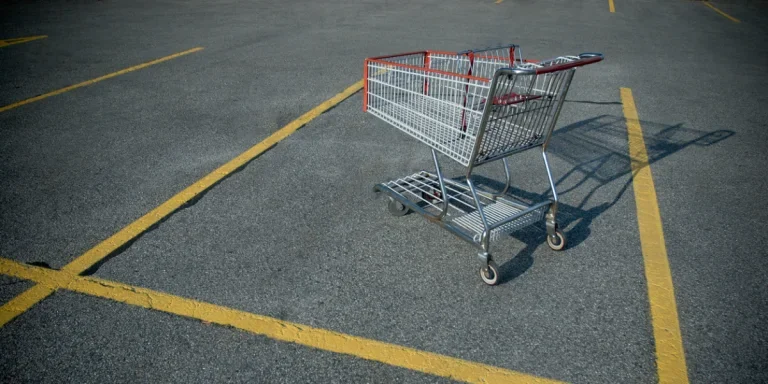Cart abandonment is a prominent concern for e-commerce businesses. An average cart abandonment rate of 70.19% shows that a lot of potential revenue is slipping away because people are basically dumping items in their carts without actually buying them. The good news is there are strategies that online store owners can adopt to turn casual browsers into loyal customers.
This article will explore the most effective ways to help reduce those abandoned carts. With a few tweaks, you can boost your sales, increase average order value, and keep shoppers returning to your store. So keep reading to learn how to reel in customers before they get away.
Table of Contents
Top reasons for cart abandonment
16 strategies to reduce cart abandonment in 2024
Conclusion
Top reasons for cart abandonment
1. Forced account creation

One of the main reasons buyers abandon their carts is forcing them to create an account to complete a purchase. Studies show that 23% of users fail to complete their orders if they must create a new user account. Although most online retailers require account creation for email retargeting, some customers are concerned about providing their data, especially when planning to make a one-time purchase.
2. Overcomplicated ordering and checkout process
A study showed that 58% of Americans are quick to abandon an online purchase if the checkout flow is complicated. A standard checkout procedure follows a logical order. That is, after the customer adds to the cart, they will provide payment details, shipping address, and shipping option, preview their order, payment, and finally, confirmation. If your sequence is complex, your buyers may be confused and abandon their carts.
3. Site speed and performance issues

Laggy e-commerce sites hardly convert, as they have a high cart abandonment rate of a whopping 90%, according to YOTTAA’s research findings. In addition, the 2020 research had 57% of its respondents rather buy from a competitor, with 18% never returning to that store.
Technical issues like bugs and glitches, though normal, can lead to abandoned carts if they persist. These errors are fatal, as 13% of shoppers would not continue with a purchase once website errors ruin their shopping experience.
4. Slow delivery and limited shipping options
One of the most common reasons for the high shopping cart abandonment rates is slow delivery and the unavailability of preferred shipping methods. A McKinsey report shows that 46% of shoppers abandon their carts if shipping times take too long or their favorite choice of shipping is unavailable. To add on that, 34% replied that long delivery times were a reason they preferred buying from a physical store rather than buying online.
5. Lack of promo codes to use

Many e-commerce websites provide promo codes to new customers, and if you have none available for your customers, the chances of them abandoning their carts are high. In fact, the rate at which online shoppers fail to make a purchase when they lack a coupon code stands at 78%. Furthermore, 86% of shoppers would rather shop elsewhere.
6. Inadequate payment options
A large number of consumers prefer paying for an item online using their preferred payment option, with 42% of them abandoning their carts if their payment method is unavailable. Therefore, having few payment options in your e-commerce shop may chase away your potential customers.
7. Additional/hidden costs

High unforeseen costs have made 47% of buyers think again about their purchase. These extra costs mostly include taxes, shipping costs, and other additional charges. Some customers even add items to their cart to see the accumulative prices and leave once they see the fees they will pay.
8. Security concerns
Customers have trust issues with websites that display malicious characteristics. These include a lack of an SSL certificate, unacquainted brand names, bad reviews, or having a non-business domain email address. According to Baymard Institute, 19% of customers are unwilling to provide their credit card information if they don’t trust your website.
9. Vague return and refund policy
Information on warranties, return of items, and refund policies is often provided to customers after they add to the cart. If your policy lacks clarity, the buyers are likely to leave and buy the item from another store with a better one.
10. Price comparison
Customers can hop from one e-commerce brand while adding carts to another to see the prices of similar products. Once they see that your price offers are not convincing for them, chances are, they may choose to go with a competitor’s offer. This is why you need to regularly review and update your prices to avoid too many abandoned carts.
16 strategies to reduce cart abandonment in 2024
1. Send an email immediately after the buyer abandons their cart

Once shoppers have abandoned their online carts, it’s not too late to win them back. Sending cart abandonment emails is an easy way to recover lost sales and boost your revenue.
Send an email within 24 hours of shopping cart abandonment reminding them of the items they left in their cart. In the follow-up email, include the list of products they selected, including images, prices, and a link to the checkout page. This helps jog their memory and makes it easier to complete the purchase.
2. Get rid of sign-in barriers
Avoid using sign-in barriers as they prevent your potential customers from completing their purchase. Although having users create an account is essential, it could damage your conversion rate. Instead of users having to fill out several forms to sign up, adopt a social login where they use their Google or Facebook login details.
3. Provide guest check-out options

In cases where mandatory account creation makes customers abandon their carts, provide them with guest checkout options. This will work where customers want to keep their data private from your website. With guest checkouts, they only provide their email address and credit card details for delivery updates and payment.
4. Make the checkout process seamless
Your customers may give up in frustration if your site is hard to navigate or the checkout flow seems complicated. Ensure that your website is simple and the path to purchase is clear. In addition, include progress indicators so customers know where they are in the buying process.
5. Make shipping times as quick as possible

Customers can pause a purchase if they find the item will take too long to be delivered. To curb this, make your shipping times shorter. If possible, try implementing same-day deliveries for your customers.
6. Optimize page speeds
30% of respondents in a study by Neil Patel said they abandon their carts if it takes 6-10 seconds to load a product page. Boost your page speeds to keep your user experience as short as possible. 0-4 seconds is the best for conversions.
7. Come up with intent-based incentives
Everyone loves a good deal, and there are chances your customers are abandoning carts since they don’t have an opportunity to save money. The use of intent-based incentives such as discount codes and BOGO deals can create a sense of urgency and motivate a buyer to complete a purchase. When offering these incentives, remember to specify that the coupon code/BOGO offer has a limited time to encourage them to take action before the time expires.
8. Provide several payment methods
With e-commerce shopping popular nowadays, a lot of online payment methods have emerged. Include as many payment options as you can, like credit card, PayPal, crypto, and others, to accommodate the many preferences of different customers.
9. Offer competitive pricing
Having a better price than your competition helps with cart recovery by making customers always want to buy from you. Always check how other e-commerce retailers are pricing their products and put a price point that challenges them.
10. Be clear about all costs
When customers get to the end and find high total costs, they may opt to leave. In this case, get rid of these extra costs or display the additional fees clearly upfront.
Sometimes, high unexpected shipping costs happen due to a buyer’s geographical location. You can provide them with updated prices, including delivery costs, before checkouts to avoid surprises.
11. Add security features

Employing security features in your e-commerce site reduces cart abandonment since customers will feel safe providing you with sensitive information like credit card details.
Security elements you should add to your website include trust badges, seals, and symbols that boost your store’s credibility.
12. Add social proof
If website visitors are leaving without buying due to uncertainty or lack of trust, use social proof to reassure them. Include two or three verified reviews or testimonials from real shoppers on the product page. The reassurance from others will minimize their concerns and make them comfortable completing the purchase.
13. Use retargeting ads
Retargeting cart abandoners on social media platforms is one of the best ways to give your brand another chance to win them back. Use the information you gathered from their cart session to serve up email, Meta Ads, or Google Ads. Remind them of what caught their eye in the first place while keeping the messaging positive and enticing.
14. Utilize exit intent popups
Another online shopping cart abandonment strategy is implementing an exit-intent pop-up. This pops up when someone is about to leave your site to offer them an incentive to stay.
When utilizing an exit intent pop-up, here are tips to increase its effectiveness:
- Set up the pop-up to appear as soon as someone moves their cursor to close the tab or browser window. This will catch them in the act and give you one last chance to grab their attention.
- Keep the message short and sweet. A few sentences are all you need to convey your offer and call them to action. Any more, and they likely won’t read it.
- Make the call-to-action button highly visible and compelling. Say something like “Save 10% Now” or “Spin to Win” to pique their interest.
- You can offer a coupon code link to a giveaway entry form onsite or a link to a separate landing page for the offer. Whatever you choose, make it easy for them to take advantage of it.
- A/B test different offers and messaging to see which is the best deal. You may find discounts, free shipping offers, or a chance to win a high-value prize to perform better.
15. Issue a clear return policy

Provide your customers with a good refund and return policy to minimize abandoned carts. Make sure that it is clear and understandable. To add on that, provide a link to the policy early in the buying process to make them comfortable while shopping.
16. Add a live chat support and phone contact
In case customers have questions or complaints when buying items, a live chat customer service can help. You can then respond to their issues, which improves their checkout experience and reduces the chances of them abandoning carts and buying elsewhere.
If they are shopping outside of business hours, utilize chatbots or provide a phone number where they can call your support team to address their problems.
Conclusion
The cart abandonment strategies discussed here can go a long way in ensuring lower abandonment rates and this can easily translate into more sales. As a result, implementing any of these tactics can make a big difference in recovering lost revenue from cart abandonments, and if managed well can significantly improve the rate of overall conversions that lead to sales.
To get more insights into essential e-commerce strategies and updates, remember to explore Alibaba.com, and for tips on how to source products effectively, you can start here.





 Afrikaans
Afrikaans አማርኛ
አማርኛ العربية
العربية বাংলা
বাংলা Nederlands
Nederlands English
English Français
Français Deutsch
Deutsch हिन्दी
हिन्दी Bahasa Indonesia
Bahasa Indonesia Italiano
Italiano 日本語
日本語 한국어
한국어 Bahasa Melayu
Bahasa Melayu മലയാളം
മലയാളം پښتو
پښتو فارسی
فارسی Polski
Polski Português
Português Русский
Русский Español
Español Kiswahili
Kiswahili ไทย
ไทย Türkçe
Türkçe اردو
اردو Tiếng Việt
Tiếng Việt isiXhosa
isiXhosa Zulu
Zulu